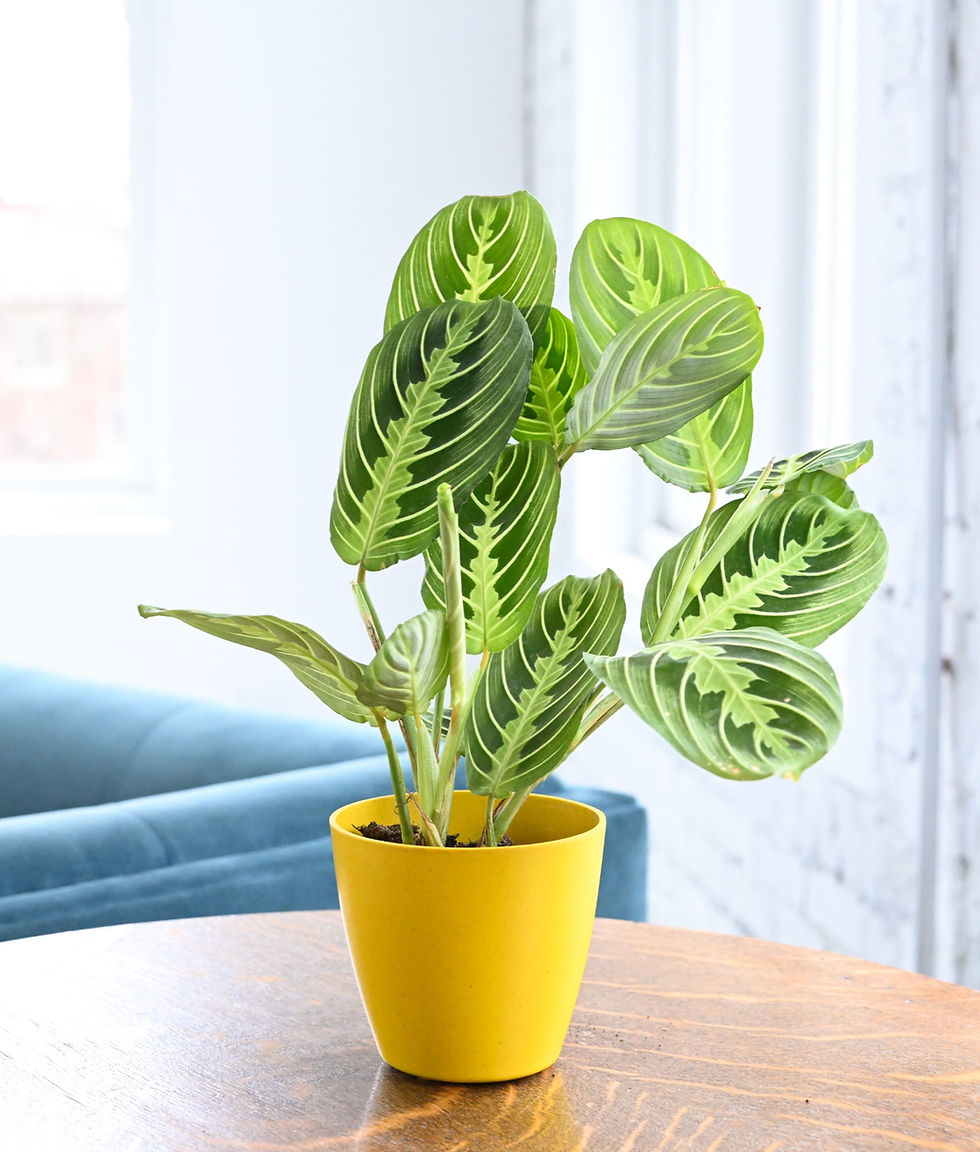Prayer Plants - 4 Reasons Why Yours May Not Be Praying
- Thorsen's Greenhouse

- Oct 20, 2022
- 3 min read
One of the unique features of Prayer Plants (genus: Maranta) is their ability to 'pray' or close up their leaves in the evening. Their ability to do this stems from a part of the plant called the Pulvinus. The Pulvinus is a motor organ, and functions similarly to a muscle. This organ sits at the base of each leaf, and provides an increased range of motion for the leaf to move throughout the day! The movement itself is called Nyctinastic Movement, or sleeping movements and normally occurs as a response to darkness, as part of the plant's circadian rhythm. Several plant species have the ability for Nyctinastic Movements including Marantas, Calatheas, Stromanthe, and Ctenanthe - all of which are part of the family Marantaceae. Not much is known about the purpose this movement serves for the plant, but it is enchanting to watch happen!

Even though all Prayer Plants have the ability to 'pray' sometimes they stop moving, move less than normal, or never moved in the first place. Don't panic if this happens to your Prayer Plant! A Prayer Plant doesn't need to move in order to be a healthy and thriving plant. However it can still be upsetting if your plant's movement changes inexplicably. If it happens to your plant, use it as an opportunity to diagnose potential problems with your plant. Use this guide to address potential reasons your plant isn't 'praying'.
1. Too Bright At Night
The Nyctanistic Movement of Prayer Plants is part of their circadian rhythm and relies on changing light levels throughout the day, including a period of darkness through the night. Because this movement is in response to darkness, if the plant never experiences darkness, it is not likely to display this movement. Think about what the light level for your plant is throughout the night. Does it sit near a window which gets illuminated by a porch or street light? Consider moving your Prayer Plant to a location that experiences full darkness through the night to give it's circadian rhythm and Nyctanistic Movement a kickstart!

2. Not Enough Sunlight
On the other hand, your plant may not 'pray' if it does not experience enough light during the day. There needs to be a distinct change in light level from day to night to trigger the Nyctanistic movement. Instead of registering the darkness of night as time to close it's leaves, the plant instead spreads it's leaves out flat to maximize it's light intake at all times. Other signs that your plant isn't getting enough light is decreased growth and small leaves. Though Prayer Plants can tolerate lower light conditions than other houseplants, it does best in an area with bright indirect light throughout the day!
3. Low Levels of Moisture & Humidity
Prayer Plants come from rainforests in Central and South America. These environments are warm and moist, with a high level of humidity in the air. To allow your Prayer Plant to thrive to it's fullest extent, you want to replicate these environments as best as possible. Prayer Plants thrive with consistently moist soil (but not soggy) - avoid letting their soil dry out completely, as this can cause permanent damage to the plant. Additionally, Prayer Plants require a high level of humidity to keep itself hydrated. A dehydrated Prayer Plant will stop 'praying' in an effort to conserve water. Keep watch for signs that your plant needs watered, including drooping, wilting, or curling leaves and ensure the plant does not dry out completely!

4. Environmental Changes
Lastly, a Prayer Plant might stop moving as a stress response to changes in the environment. This could be due to seasonal changes, such as lower light in the fall and winter, or changes like moving it's location. Prayer Plants don't like changes to their environments - it is best to keep them in one spot and maintain a consistent level of care. When it does experience change, your plant might stop 'praying' as a stress response. If you need to move your plant or otherwise change their environment, do so gradually to give them adequate time to adjust.
At the end of the day, the Nyctanistic Movement of Prayer Plants, while rewarding to see, is not necessarily an indicator of plant health. Healthy and thriving Prayer Plants might never 'pray' due to any number of reasons. That being said, anytime you notice an abrupt change in your plant's behavior or growth habits, take the time to evaluate your plant's care and environment to ensure you are setting your plant up for success!
Like this blog post? Find similar content using the tags below.





Comments